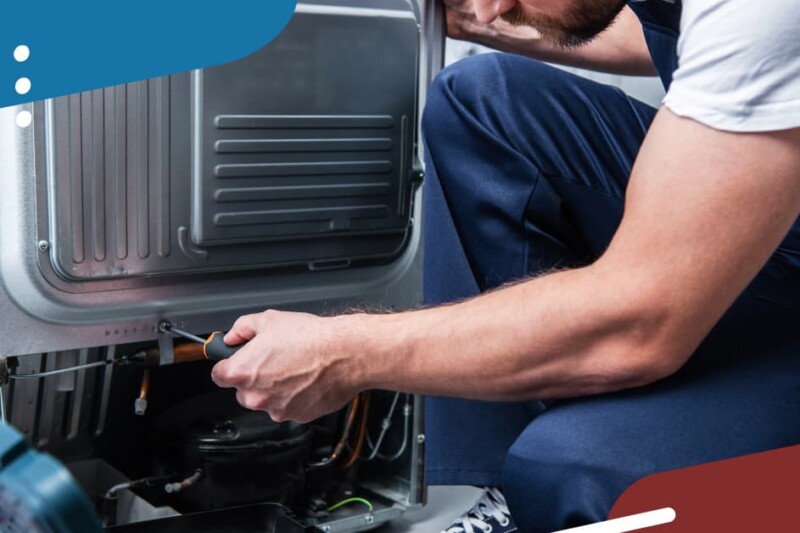Take a quick look at your ice machines to see if you spot any of these telltale signs of neglect:
- Ice at the bottom of the bin is solid, forming an ice cave.
- Ice is cloudy, pitted or holey; half-formed and very wet; or it smells.
- Ice production has slowed considerably (machine neglect can reduce production up to 50%).
- There’s scale, slime or mold in the bin or reservoir or on the evaporator plate, cube-size controls, water sensors and thermistors, water-distribution parts and water hoses or the water sump.
There are, of course, important reasons to follow the manufacturers’ guidelines for cleaning, sanitizing, and descaling machines. For example, machines with nickel evaporator plates require special cleaning solutions that won’t damage the metal, while stainless or copper-tin-dipped evaporators can handle a stronger solution, and you might not know this without referencing the manufacturers’ instructions.
Most manufacturers have very easy-to-follow, step-by-step guidelines for cleaning and descaling their machines, walking operators through which panels to remove, how to mix cleaning and deliming solutions, which parts to clean and how to clean them, etc. Your organization would be smart to adapt these instructions into quick-step guides that can be left by your ice machines (or ask your ice machine vendor to supply one to ensure the tips are in line with warranty requirements).
Many steps in manufacturers’ guidelines translate into some general best practices that will go a long way in keeping your machines running well.
Cleaning, Sanitizing
Remove and toss ice in the bin prior to cleaning the ice machine. Depending on the ice machine brand, there might be a toggle switch that readies the machine for cleaning mode or simply turns the unit off.
Visually inspect all of the major components for scale, slime and mold.
Most cleaning instructions will walk you through emptying the water reservoir and refilling with a mixture of fresh water and cleaning solution, which you then can run through an ice-making cycle so the solution cleans along the way.
Wipe down all sides of the bin, doors and seals with the solution. Note that only specifically formulated cleaning solutions will eliminate bacteria. Bins infused with antimicrobial agents also should be sanitized; these agents help retard bacterial growth, but they don’t actually stop it.
Water conditions and equipment location in your kitchen ultimately determine how often you have to clean and sanitize your machines, but twice a year is the minimum, according to Scott Hester, Owner of Refrigerated Specialist in Mesquite, Texas. And that’s not often enough if your kitchen is producing baked goods or you’re serving beer nearby. Airborne yeast is a major mold-generator.
Don’t forget to clear and clean the air filter. Ice machines need to be able to exhaust heat to run well.
Water Filtration, Descaling
When the bin’s empty, run the deliming agent through the unit to dissolve the buildup of calcium, magnesium and other hard water deposits in the lines and across components.
Overall water quality has a huge impact on ice machine performance. While facilities usually are equipped with proper water filtration and softening systems to combat poor-quality water—imperative in many parts of the country—these “upstream” quality control measures can fall into the “out of sight, out of mind” category.
First, check your water filter. Sad to say, unless your crews are meticulous about maintenance, there’s a chance your water filters haven’t been changed in a long time, if ever. Not only are they not filtering water for top-quality ice, old filters clog with carbon, chlorine, scale and other debris. A water-pressure gauge reading below 10 psi likely means a clogged filter. Change water filters every six months at a minimum.
Mineral-scale buildup can cause ice to stick to the evaporator plate’s surface, impeding heat transfer. Scale buildup can cause freeze-ups, long harvest times and diminished production and lead to costly repairs. Mineral deposits make the machine work harder and use more energy.
Look for mineral-scale buildup on the machine’s water system (inlets and distribution) and sensors; if they’re scaled up, they can’t sense anything.
Using a proper brush—nylon, nothing harsh-bristled that will scratch parts—clean the machine’s condenser coils. Get rid of built-up dirt and grease from around coils by brushing parallel to the fins and don’t push dirt into the coil. Condensers need plenty of airflow, so clear away obstructions.
After completing cleaning, sanitizing and descaling, replace all of the parts and panels, and let the machine run two ice-production cycles. Check that the freeze and harvest cycle times are where they should be. And dump that first double-batch of ice.
Resource: Scott Hester, Refrigerated Specialist, Mesquite, Texas.
Copyright FER July 2016
RELATED CONTENT
- Advertisement -
- Advertisement -
- Advertisement -
TRENDING NOW
- Advertisement -
- Advertisement -
- Advertisement -


